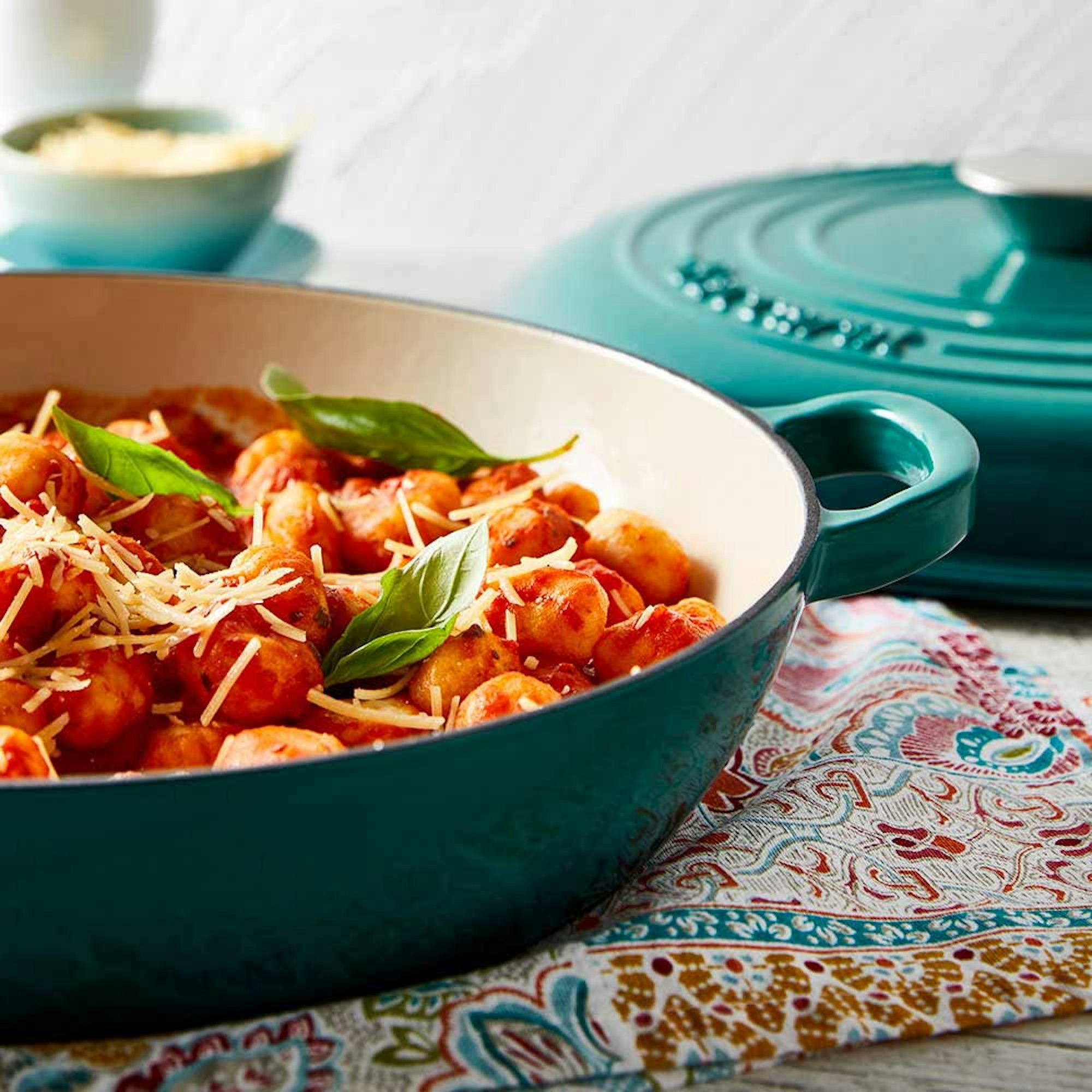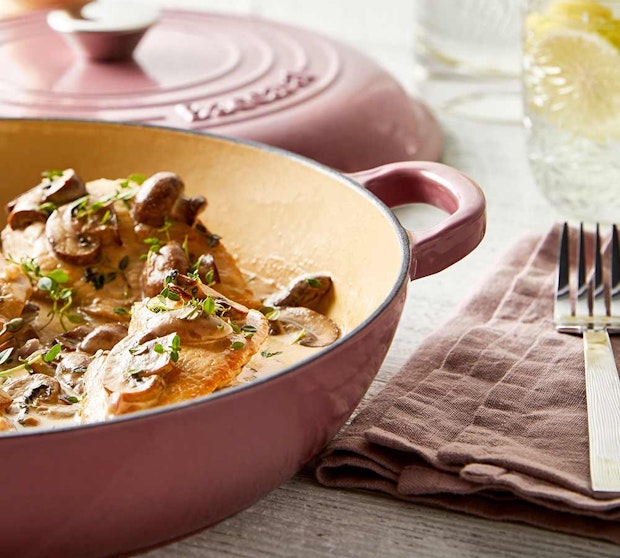Gnocchi with Tomato
Gnocchi with Tomato is a delicious meal that is guaranteed to impress. Serve with crusty bread to mop up the sauce.

Ingredients
- 1 tablespoon extra-virgin olive oil
- 1 small onion, finely chopped
- 4 cloves garlic, minced
- 1/4 cup dry white wine
- 1 can crushed tomatoes
- 250ml tomato passata sauce
- 2 sprigs basil
- 1/4 teaspoon crushed red pepper, flakes
- Coarse salt and freshly ground pepper
- 1 -2 packets premade gnocchi
- Thinly shaved parmesan cheese, for serving
Method
- Heat oil in Baccarat Le Connoisseur Saute Pan over medium heat until hot but not smoking. Add onion and garlic; cook, stirring occasionally, until onion is translucent for approximately 5 minutes.
- Add wine; cook until most liquid has evaporated. Add tomatoes and juice, tomato sauce, basil, and red pepper flakes. Reduce heat to medium-low; simmer until slightly thick, about 30 minutes.
- Season with salt and pepper. Remove from heat; cover to keep warm.
- Bring a large pot water to a boil; add 1 tablespoon salt. Add the gnocchi.
When the gnocchi rise to the top (after about 2 minutes), continue to cook until tender. Transfer gnocchi with a slotted spoon to pan with sauce. Gently toss to coat gnocchi. - Serve with shaved parmesan and a sprig of basil.
About Cast Iron Cookware
Cast iron cookware is a versatile and beloved kitchen essential that has stood the test of time. With a history dating back centuries, cast iron cookware has remained a popular choice among home cooks and professional chefs alike. Its durability, heat retention, and even heat distribution makes it a reliable and efficient tool in the kitchen.
One of the key advantages of cast iron cookware is its ability to retain heat. Once heated, cast iron retains heat for a longer period of time compared to other materials. This makes it ideal for tasks that require even and consistent heat, such as searing meats or baking bread. The heat retention also means that food stays warm for longer, making it perfect for serving dishes at the table.
Another benefit of cast iron cookware is its durability. Unlike other types of cookware that may chip, scratch, or wear out over time, cast iron is built to last. With proper care and maintenance, a cast iron skillet or Dutch oven can be passed down through generations, becoming a cherished family heirloom. Its robust construction allows it to withstand high temperatures, making it suitable for use on various cooking surfaces, including stovetops, ovens, and even campfires.
Furthermore, cast iron cookware offers a natural non-stick surface when properly seasoned. Seasoning involves coating the cookware with a layer of oil and heating it, creating a protective layer that prevents food from sticking. This makes cooking and cleaning a breeze, as food easily releases from the surface with minimal effort. Additionally, the seasoning process adds flavour and depth to dishes over time, enhancing the overall cooking experience.
In addition to its practical benefits, cast iron cookware also adds a rustic and nostalgic charm to the kitchen. Its classic design and solid construction evoke a sense of tradition and heritage. Many people enjoy the process of caring for and using cast iron cookware, as it connects them to a bygone era of cooking.
Back to blog


